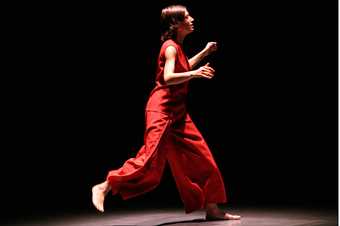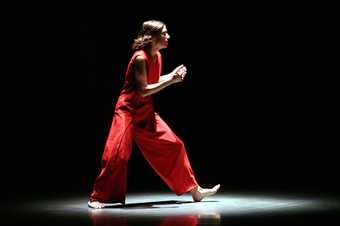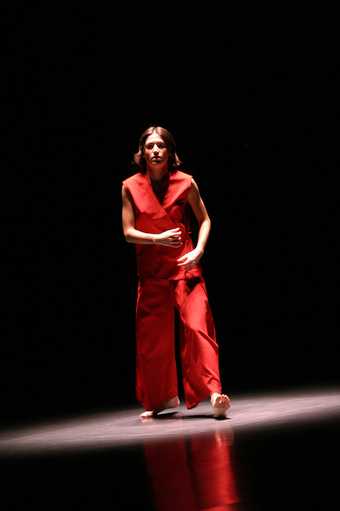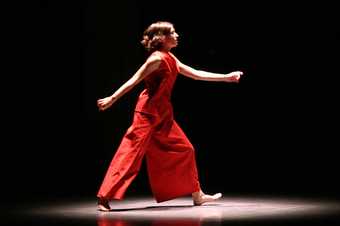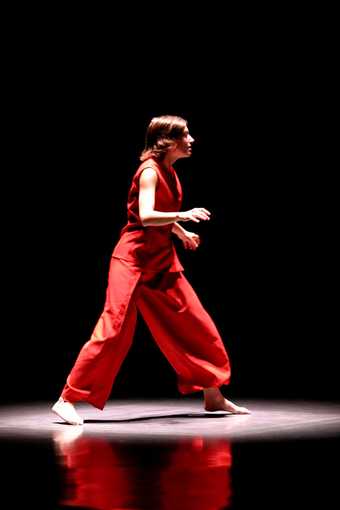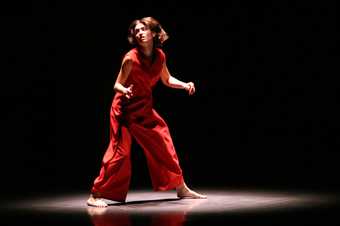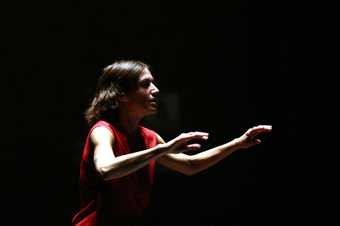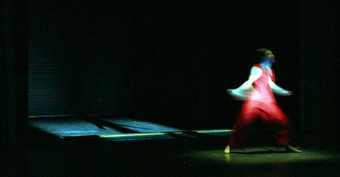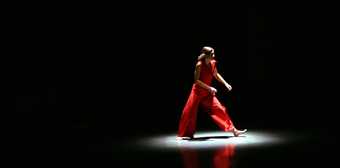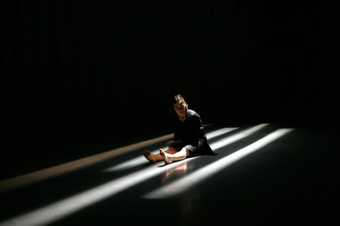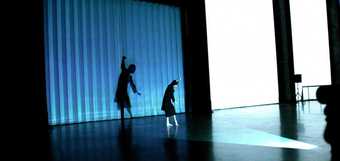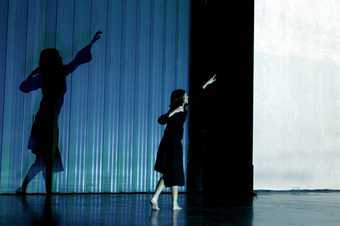In 2005, against the backdrop of Rachel Whiteread’s Unilever commission EMBANKMENT, British dancer and choreographer Rosemary Butcher presented a selection of her choreographic works, performed by dancer Elena Giannotti, on the Turbine Hall bridge at Tate Modern. The three dance pieces, along with a film work, eventually formed part of a touring exhibition Women and Memory. At Tate only the live elements of the touring exhibition were shown: one newly commissioned work, The Hour, alongside Images every three seconds and Hidden Voices, which Butcher had developed over the previous two years. Butcher’s choreographic practice, which began in the 1970s, was influenced by her time in New York with the Judson Dance Theatre, and also by minimalist visual art of the 1960s and 1970s. As a result her work integrates elements of performance and visual art, giving the impression of an installation, to be treated as a series of images with which to engage, rather than an event to be witnessed.
The three works presented by Butcher were tied together by the themes of travel, memory, personal and global history, and womanhood. They drew on light and sound to create a series of images, often obscured or shadowy, accompanied by voices or noises evoking oppressive or abstract settings. The first of the two established pieces which Butcher presented, Hidden Voices, included a lighting design by Charles Balfour, and a soundscape created by Cathy Lane. Giannotti was dressed entirely in red, lit by a small pool of concentrated light against an otherwise dark background. Her body was in stark contrast with the black floor and dim surroundings. Giannotti’s movements were minimal, and included shifting her body weight from side to side and moving from foot to foot, while remaining more-or-less on one spot. Occasionally this would crescendo to a stamped foot, a swinging arm, or the dancer looking over her shoulder, but for the most part the movements were contained and controlled, evoking the sense of running on the spot or moving without going anywhere. Lane’s sound scape accompanied Giannotti’s frustrated movement with an undercurrent of whispers. These appeared to be either the dancer’s memories and thoughts, or the voices of those she was travelling past.
The second work performed at Tate was Images every three seconds. With sound by Simon Keep, Butcher’s choreography created a dialogue between Balfour’s lighting and Giannotti’s dancing, playing with moments of illumination, and discordant movement. The centre of this work was a tightly focused square of light, within which the lighting patterns changed and contorted. Giannotti moved in counterpoint to this, meaning that every three seconds – in accordance with the title – she was illuminated in whichever position she held. These movements took as their source a series of photographs taken by Harriet Logan of women in Afghanistan under the Taliban regime. Each of Giannotti’s movements drew from a still photograph taken by Logan. Where Hidden Voices spoke to a sense of shared experience of travel between the dancer and the voices, Images every three seconds was an uncovering of an unexplored history of oppressed women. The images presented were never complete, and were exposed only fleetingly, alluding to a history only half-remembered.
In contrast, the Tate-commissioned work, The Hour, expanded the space of the installation. Rather than working with a tightly focused patch of light demarking a performance space, the dance took place against a large film projection, which played along the back wall of the Turbine Hall. The light from the projector was captured on the floor creating bars of light, but then stretched up the height of the wall, creating a flood of light over the whole performance area. As Giannotti moved more freely about the Bridge she was caught in the bars of the projection, and the images of landscapes and ghostly figures depicted dwarfed her. The images were out of focus and fragmentary, suggests the degradation and distortion of memory. The difference in scale between the expansive projections and the diminutive dancer connected the three performances through the interwoven threads of travel, exploration, history and memory.
Butcher’s performances bound environment and movement together through the interaction of dance and lighting. Butcher eschewed narrative as a means of experience, and emphasised the presence of the dancer in the space. But the interaction between the live dancing body, and the predetermined choreography of movement, light, and sound explored the act of returning to the past from the present. As such the three performances made the contingency of memory and history present for the audience.
Acatia Finbow
March 2016

